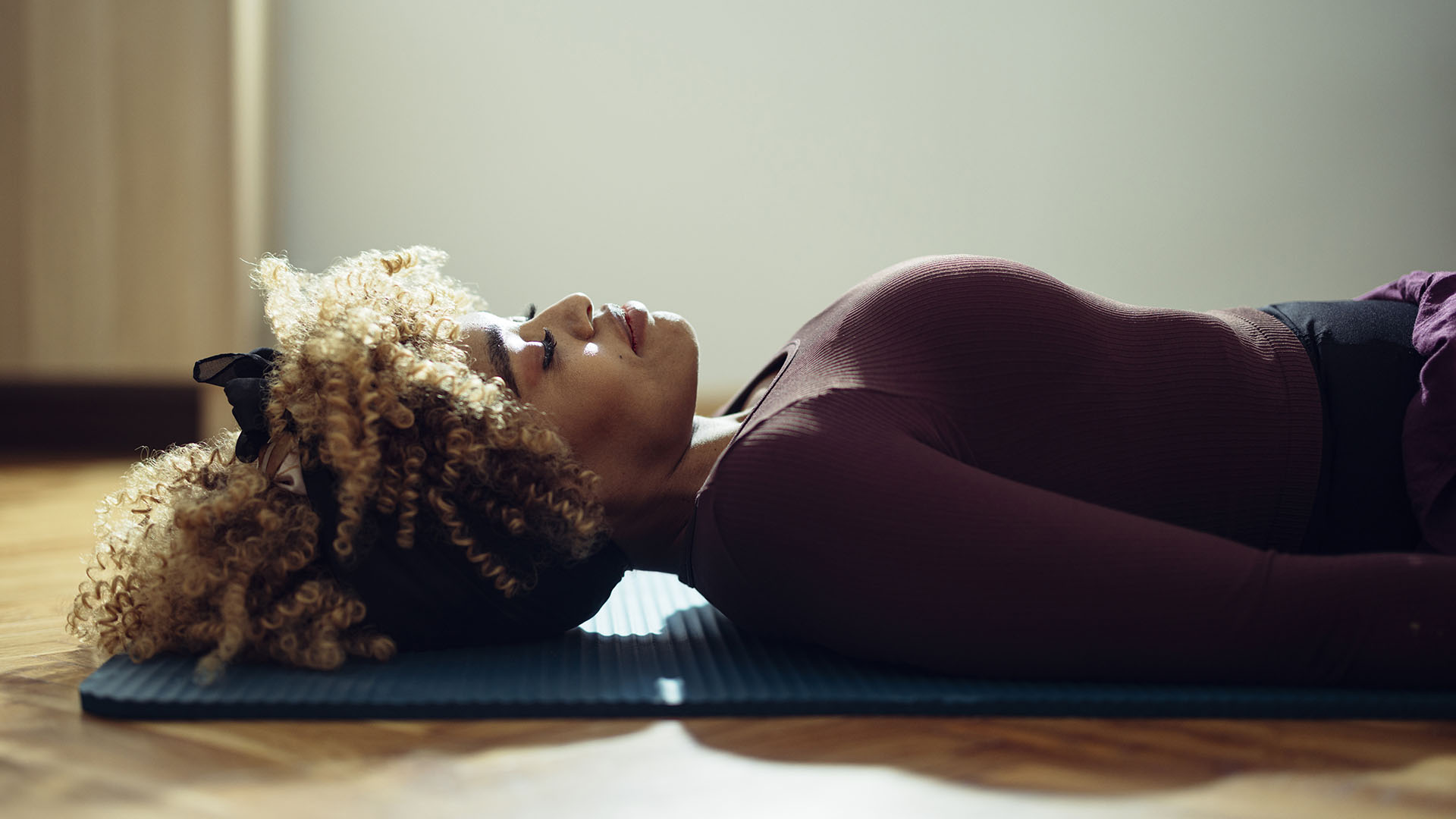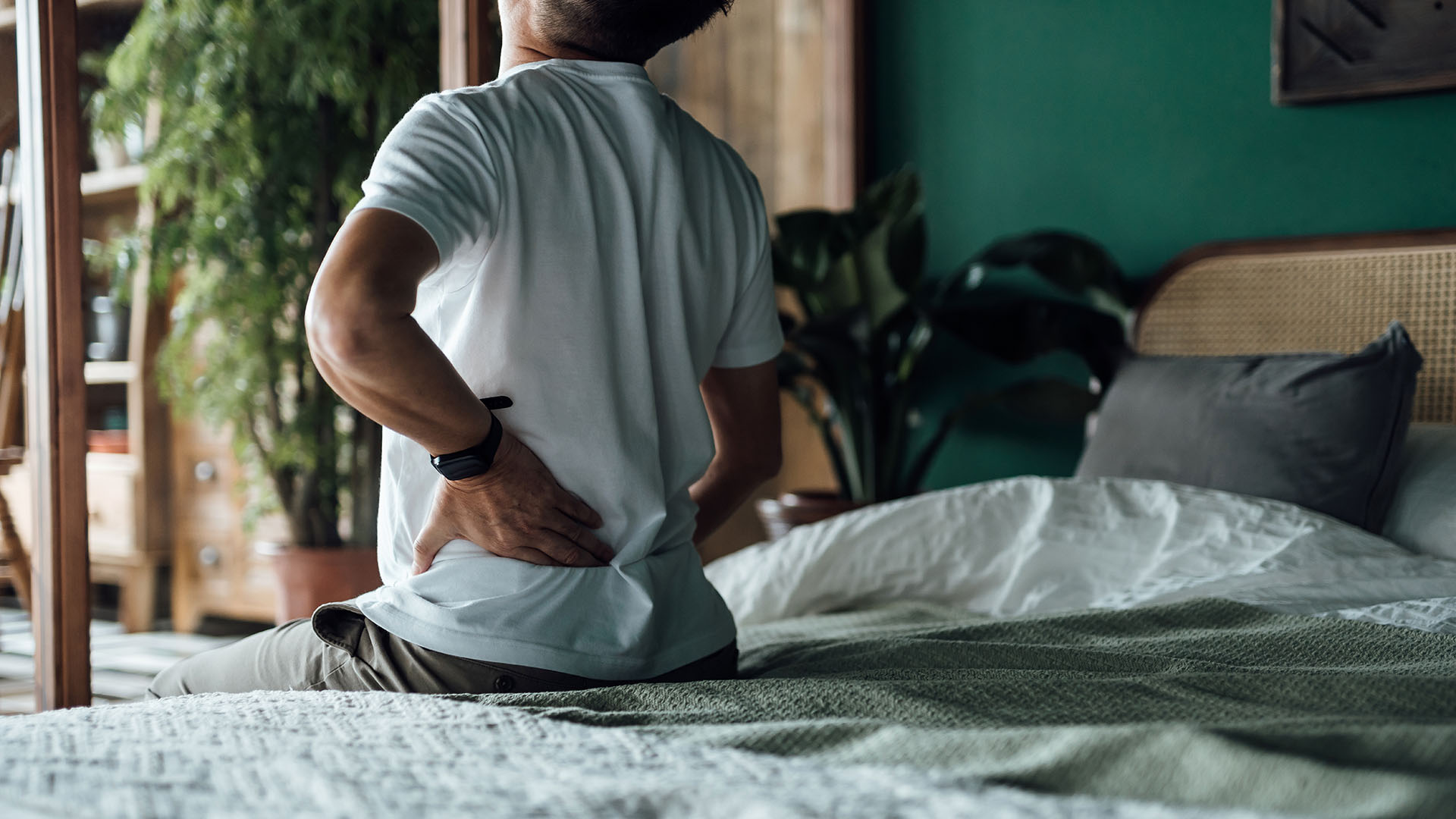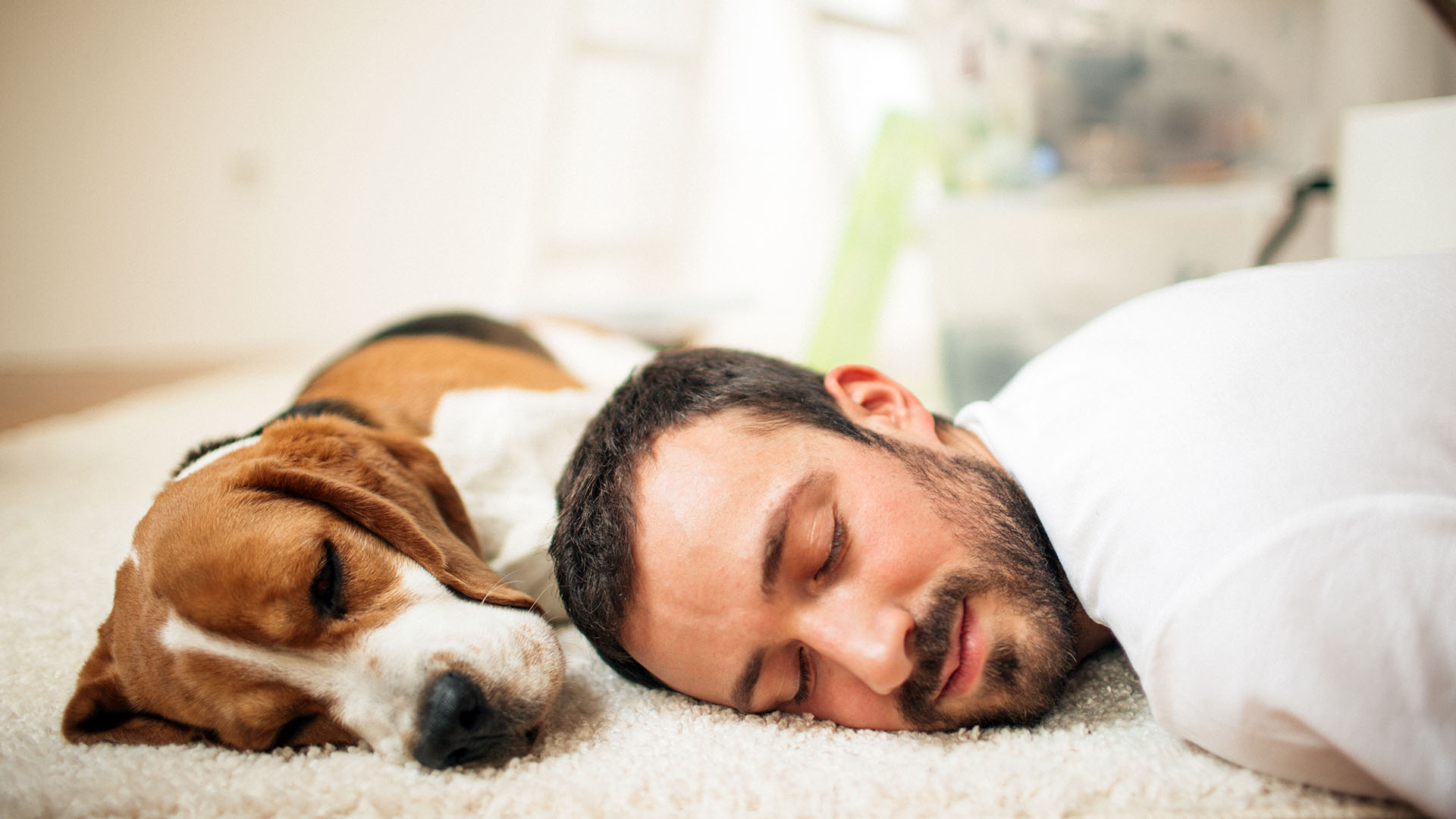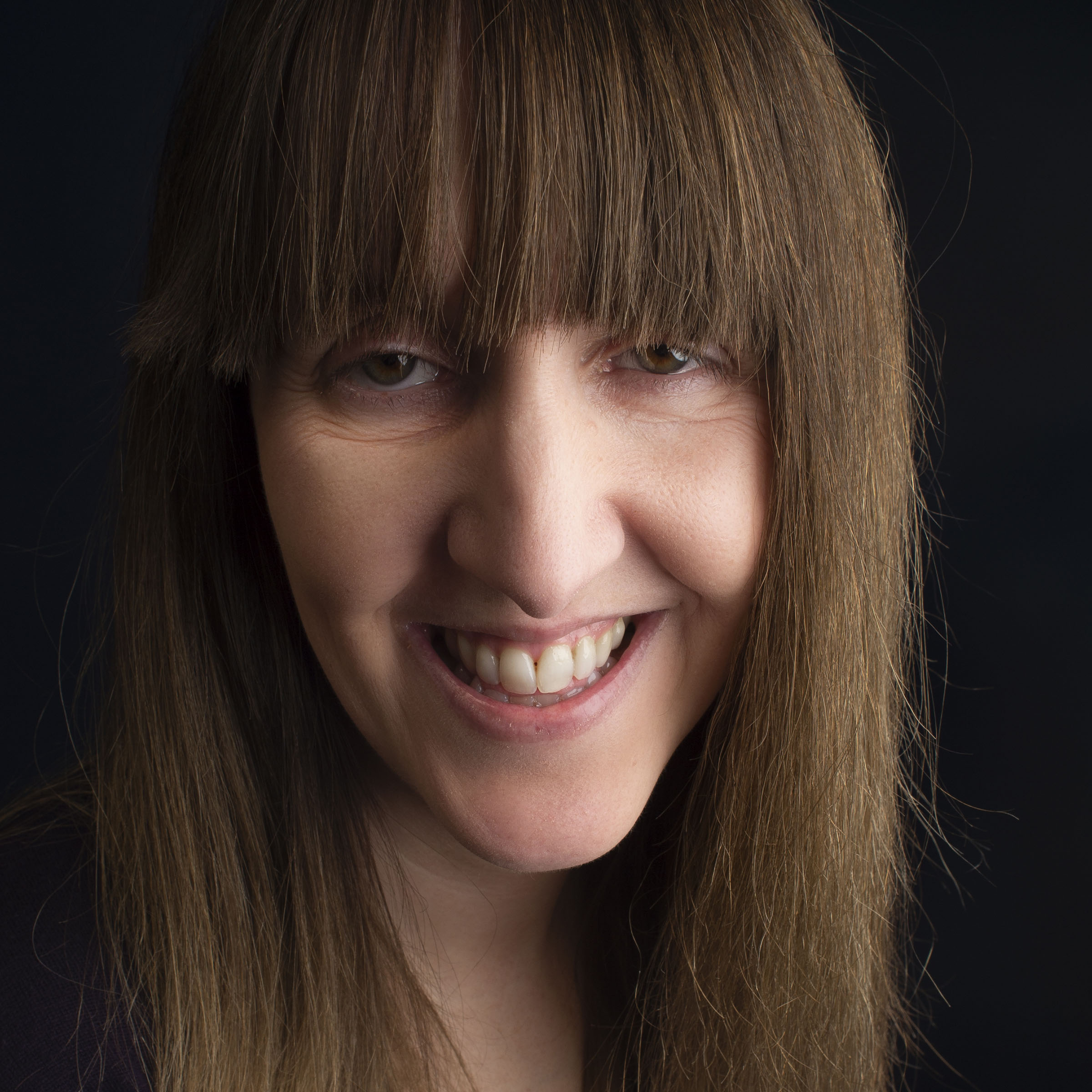Is sleeping on the floor good for you? We asked a sleep expert for their opinion
Thinking about sleeping on the floor? We investigate the positives and negatives

In some cultures around the world, sleeping on the floor is the norm. But for those of us who are used to a thick mattress it could seem like an anathema. However, there are reasons why you might want to trial sleeping on the floor. Perhaps you like a very firm sleeping surface and feel that the floor could provide this? Or you may be living in a very small space that doesn’t give you room for a full-sized bed.
Whatever your reasons for thinking about sleeping on the floor, it’s natural to wonder if doing so would be good for you. In this guide we’ll look at whether it’s a good idea to sleep on the floor and if it can be harmful. Do remember that if you’re finding your mattress uncomfortable, it could be because it’s getting old – in which case you should consider in investing in one of the best mattresses in our guide. And whether sleeping on the floor or on a mattress, you’ll need one of the best pillows to keep your neck supported.
We spoke with Dr Chester Wu, sleep expert and double board-certified physician to get his opinion on whether it’s a good idea to sleep on the floor.
What are the benefits of sleeping on the floor?
Unfortunately, this is an area that hasn't been studied very closely. "Insofar as sleeping on the floor has benefits, they will likely be relative to your alternative sleeping surface, not absolute benefits in and of themselves," explains Dr Wu. If your mattress (or other sleeping surface) is too soft, sleeping on the floor offers a firmer sleeping surface, which may provide better spinal alignment for some, improving posture or reducing back pain. It may also be an upgrade over uneven or noisy mattress springs, allowing for more restorative sleep.”
Studies suggest that the best mattresses for back pain tend to be on the firmer side. So if your mattress is too soft, sleeping on the floor could be a good temporary solution. And, as your spine will be kept aligned your posture should also improve. Sleeping on the floor can also help to keep you cooler, with sleep cycles being improved by lower temperatures.

What are the downsides of sleeping on the floor?
According to Dr Wu, there are several potential downsides to sleeping on the floor. The main one, unsurprisingly, it that it probably won't be very comfortable for most people. Those who like to lie on their sides, in particular, will likely not enjoy the lack of cushioning around pressure points (the best mattresses for side sleepers tend to be a little on the softer side, for exactly this reason).
"The floor can also get cold, potentially leading to a sub-optimally low temperature during sleep and subsequent awakenings," continues Dr Wu. "There may also be a higher risk of exposure to dust and allergens at floor level (that being said, mattresses can also be a cause of allergies themselves)."
All of this can lead to problems sleeping, which has plenty of knock-on effects for both physical and mental health.
Is sleeping on the floor safe for everyone?
Some people should avoid sleeping on the floor, including older people, those with allergies and those with certain health or mobility conditions.
Dr Wu explains, “For older individuals, getting up from the floor might be challenging and pose a fall risk. Those with allergies might react to dust and allergens on the floor. People with certain health or mobility issues may find floor sleeping exacerbates their conditions or makes moving more challenging.”

How to sleep on the floor: Top tips
If you decide that sleeping on the floor might be for you, you’ll need to set things up to suit your body and sleeping style. Here are some tips to help.
Get daily insight, inspiration and deals in your inbox
Sign up for breaking news, reviews, opinion, top tech deals, and more.
1. Keep the floor clean
“You’ll definitely want to clean the area to reduce allergen exposure”, says Dr Wu. And keeping the floor clean and tidy will also help make it easier to get to sleep in the first place. Make sure you sweep, vacuum and / or mop regularly to pick up any debris and allergens and check there’s nothing on the floor that you could roll onto during the night.
2. Create a 'bed'
You might not be sleeping on a mattress, but this doesn’t mean we’d recommend sleeping directly on the floor. Some people use basic blankets or mats, but we’d recommend using something thicker such as one of our best mattress topper recommendations.
3. Add support
“Using a head pillow that keeps your neck aligned with the rest of your body will help to mitigate alignment issues presented by a firmer surface”, says Dr Wu. “Consider body pillows as well”.
Back sleepers might place a pillow beneath the lower back and another underneath the knees, as this will relieve pressure in the lower back. Side sleepers should consider a pillow between the knees and a thin pillow between the waist and floor to relieve tension. Finally, stomach sleepers should place a small pillow beneath the hips and only use a very thin pillow to avoid neck and back strain.
4. Trial sleeping on the floor with a nap
Because sleeping on the floor is so different to a bed it can take time to get used to. We’d recommend trialling it by taking a nap on the floor first.
5. Choose the right time
"Because sleeping on the floor might take some getting used to, and, as such, potentially disrupt your sleep, don’t try this out when you’re already sleep deprived and need to sleep more than usual," suggests Dr Wu. "Same goes for a night before something important, like a big meeting or performance. Try perhaps starting with a nap on the floor and take it from there."

Dr Chester Wu is double board certified in Psychiatry and Sleep Medicine. In addition to his work as Rise Science’s Medical Reviewer, Dr. Wu provides sleep medicine services, medication management, and psychotherapy to adults at his private sleep medicine and psychiatry practice in Houston.
Jo Plumridge is a freelance writer and photographer with over 20 years of experience writing for a variety of magazines, books and websites. She writes, perhaps unsurprisingly, about photography but also extensively on all things sleep and interior design related, alongside home and tech product reviews. She’s lived in the middle of a nature reserve in Botswana and written a guidebook to New Zealand, but now spends a lot of time trying to photograph the cats she and her husband foster for a local charity - without a doubt the most challenging subjects on earth!
